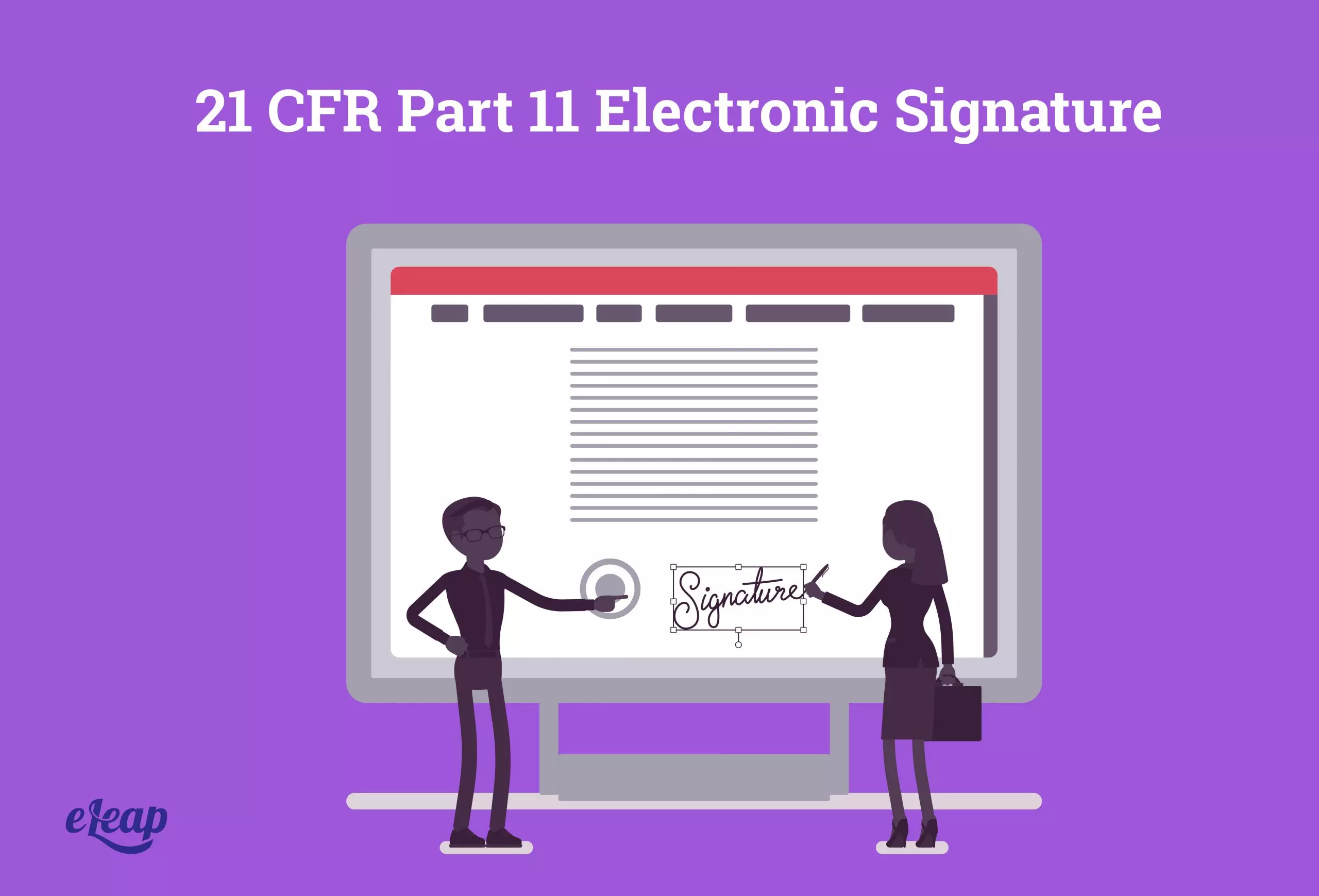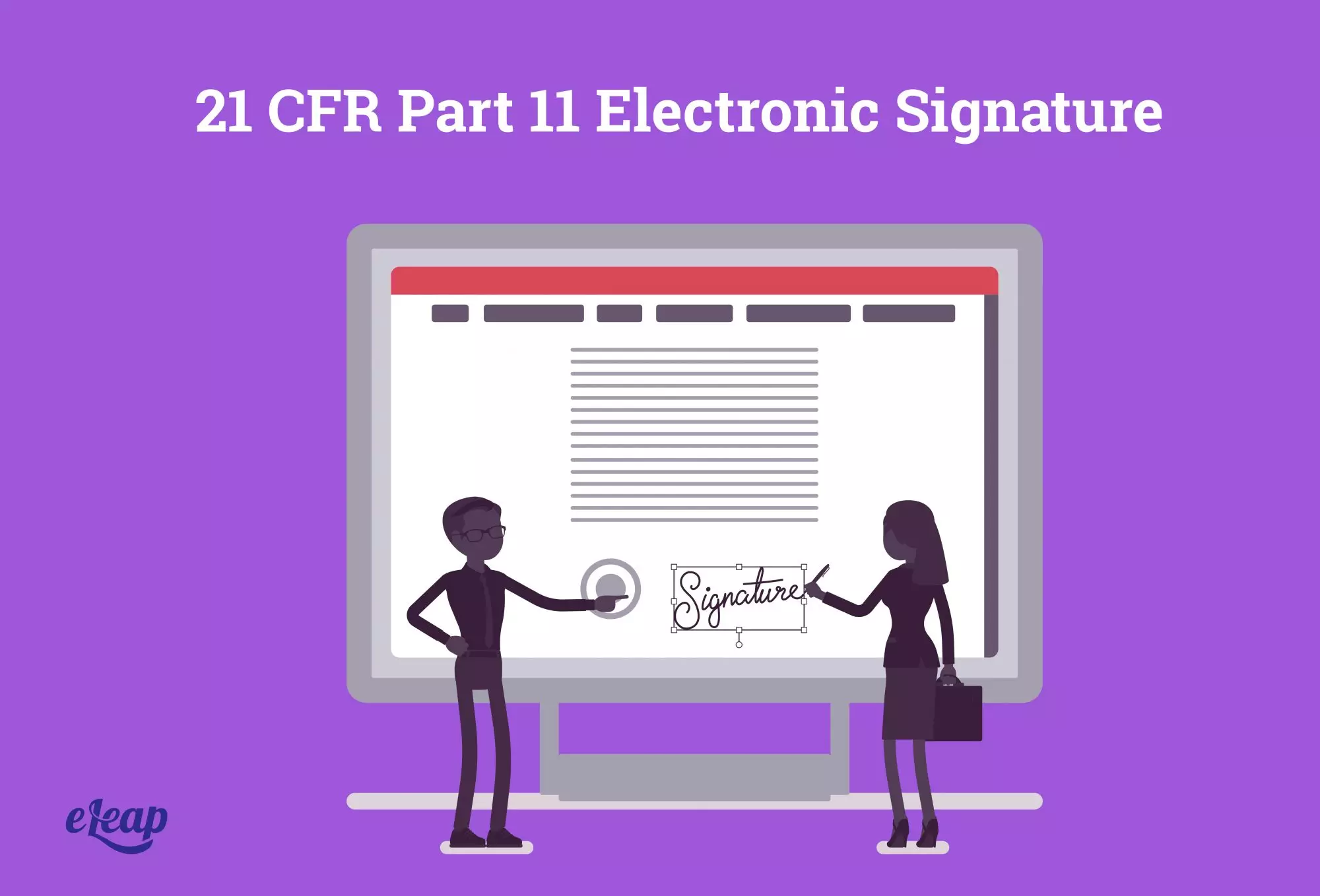21 CFR Part 11 Electronic Signature
E-Signature Requirements under 21 CFR Part 11 Apply to L&D

21 CFR Part 11 has major implications for life science organizations. It deals with any system that processes or stores electronic records and focuses on information control and protection in the wake of increasing digital threats and growing data breaches. While you might automatically think of your accounting or payroll system, there are others that deserve your attention, including your LMS.
Ongoing learning and development is a vital consideration for today’s life science organizations. Training records are also one of the first things checked in an FDA inspection, so it pays to have the right LMS in place. One of the most important things to look for when it comes to choosing a validated LMS software, is the way it deals with 21 CFR Part 11 electronic signature requirements.

In this post, we’ll discuss what you need to know about electronic signatures, and what to look for when it comes to a learning management system that offers robust functionality in this area.
What Is an Electronic Signature?
An electronic signature is nothing more than a combination of several pieces of information that are used to identify an authorized user within the LMS. In Title 21 CFR Part 11, the FDA stipulates the following:
(a) Electronic signatures that are not based upon biometrics shall:
(1) Employ at least two distinct identification components, such as an identification code and password.
(i) When an individual executes a series of signings during a single, continuous period of controlled system access, the first signing shall be executed using all electronic signature components; subsequent signings shall be executed using at least one electronic signature component that is only executable by, and designed to be used only by, the individual.
(ii) When an individual executes one or more signings that were not performed during a single, continuous period of controlled system access, each signing shall be executed using all of the electronic signature components.
(2) Be used only by their genuine owners; and
(3) Be administered and executed to ensure that attempted use of an individual’s electronic signature by anyone other than its genuine owner requires the collaboration of two or more individuals.
(b) Electronic signatures based upon biometrics shall be designed to ensure that they cannot be used by anyone other than their genuine owners.
So, what does that mean for your LMS and the electronic signatures used within it? Let’s dig a bit deeper.
21 CFR Part 11 Electronic Signature Requirements within Your LMS
Your learning management system records, stores, and provides access to a very wide range of digital information. It’s crucial that it follows some specific steps to ensure that only authorized users are able to access the records it contains. Before any important task – logging in to the system, withdrawing from a course, completing a course, etc. – a prompt should require the user to provide their electronic signature information. There should be three components:
- The username/ID
- The user’s password
- The meaning or reason for the update
Only when all three of these components are used in conjunction can they be considered a 21 CFR Part 11 electronic signature, and only then do they carry the authority and authenticity of a “wet” signature. In addition, the username/ID and password must be correct for the user and for the intended purpose before the operation can occur. Contact eLeaP to see how we comply with Part 11.
For instance, suppose a learner logged into the LMS and requested access to a specific function – such as deleting test scores. In a properly set up LMS, access to that function would be restricted to specific usernames/IDs and individuals. If the credentials the user provides don’t match the list of authorized individuals, the system will not allow them entry.
This is just one example of how you might decide to configure your LMS to prevent unauthorized access to information and functions while preserving audit trails and accountability. Other potential examples include the following:
- Learning program completion form
- Withdrawal from course
- Course launch
- Course update
- Course deletion
- Course importing
- Course finish
- Exam launch
- Transcript details modified by reviewer
- Change in question/question status
- Manual answer/test grading
- Transcript/record details modification
- Training record editing
Only with the right combination of username/ID and password can any of the following actions be launched or completed. In addition, without accurate meaning details, the system should not allow the action to be launched or completed.
The Benefits of 21 CFR Part 11 Electronic Signature Requirements for Your LMS
While it’s easy to feel that 21 CFR Part 11 introduces burdens that life science organizations must bear, they also bring significant benefits as well. This is particularly true in a system where electronic signatures have been fully implemented. Some of the benefits offered include:
- Ensure that authorized users are able to access specific courses/modules/materials.
- Ensure that only administrators can access sensitive data.
- Ensure that all required previous modules/lessons have been completed prior to completing a course.
- Ensure that learners are able to access customized training plans specific to their certification, training, and career needs.
- Ensure protection against falsification of training records or unauthorized changes to the information in the LMS.
Finding the Right LMS for Your Organization
While it can be challenging to find an LMS that is validated to support electronic signature requirements, doing so is important. It’s not just about regulatory compliance, either. It speaks to information security, growth potential, and the ability to train and educate your team to help further the organization’s success.
At eLeaP, our learning management software has been fully validated and complies with all 21 CFR Part 11 electronic signature requirements. We invite you to contact us to schedule a custom CFR Part 11 consultation and to see how we can support your learners.